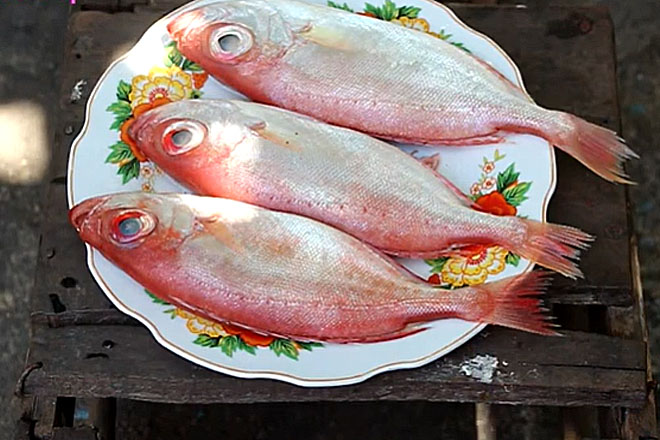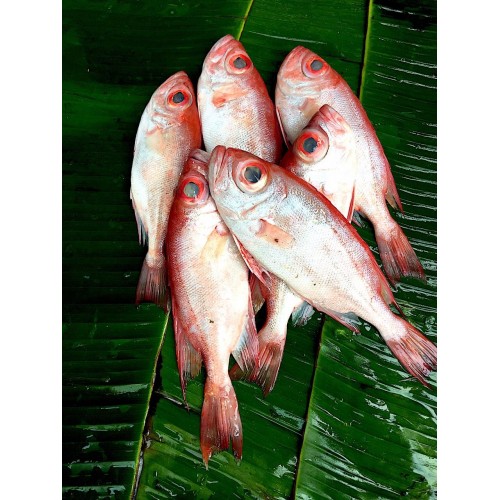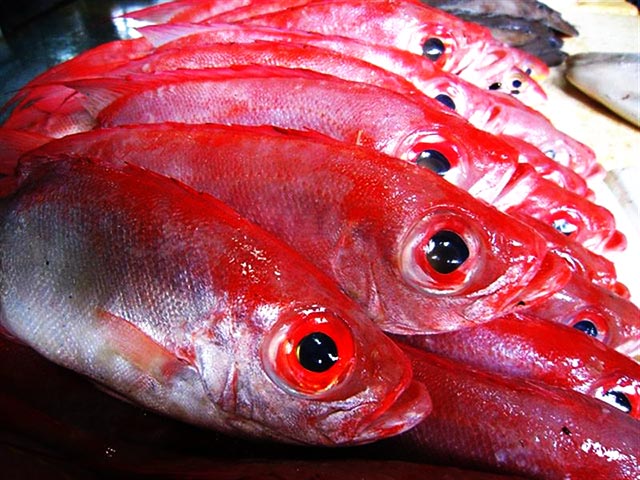The Western region boasts not only idyllic natural landscapes but also a diverse range of specialties that captivate anyone who visits. From simple fruits to rustic dishes, this place is truly a culinary paradise.
Among the specialties, the most notable are the fish with peculiar names, arousing curiosity and appetite just by their mention, regardless of the price. One such prominent fish is the “ba trau” or “ca bã trầu” in Vietnamese, also known as “thanh ngoc” or “cay truong” fish.
“Many visitors are often surprised by the variety of names this fish holds. However, for the locals of the Mekong Delta, it is a familiar friend; a quick glance is all it takes to recognize the unique ca bã trầu,” shared Hung, a 31-year-old local from Vinh Long province.
The ca bã trầu bears a resemblance to the “ca huong” fish but with larger eyes, thinner skin, and smaller scales. They come in various sizes, from small to large, weighing a few kilograms. This fish belongs to the “ca sac” family and inhabits deep waters or slow-flowing shallow streams.
“Ca bã trầu can be found in both freshwater and marine environments. In the Western region, they tend to be smaller, while in the central coastal areas, they appear in larger sizes. However, when it comes to quantity, the Western region takes the lead in the number of ca bã trầu,” added Hung.
In the past, ca bã trầu was common but less known, mainly consumed by rural folk living along the rivers. Over time, its presence on the dining tables became scarce.
“Lately, I’ve noticed ca bã trầu making a comeback in the market, regularly sold and featured on the menus of numerous restaurants and eateries. Consequently, it has gained recognition as a delicacy among discerning foodies in the city, who actively seek it out to indulge in its unique flavor,” Hung shared.
Nowadays, ca bã trầu can be found in many southern local markets, as well as seafood supermarkets along the coast. Its price ranges from 145,000 to 300,000 VND per kilogram, depending on the size of the fish.
Considered a specialty, ca bã trầu offers a versatile culinary experience. Hung shared, “Locals in my hometown often cook it in sour soup, fry it with fermented fish, or braise it to be enjoyed with boiled vegetables. On the other hand, coastal folks prefer grilled dishes, such as whole grilled fish, grilled fish with salted chili, or steamed fish wrapped in rice paper and dipped in fish sauce. No matter the preparation, each dish made from ca bã trầu exudes a delicious, sweet, and distinctive flavor that lingers in the memory of those who taste it.”

Ca bã trầu, a delicacy with multiple intriguing names

Ca bã trầu, a fish with distinctive features

The humble beginnings of ca bã trầu: A fish once common in rural settings






























